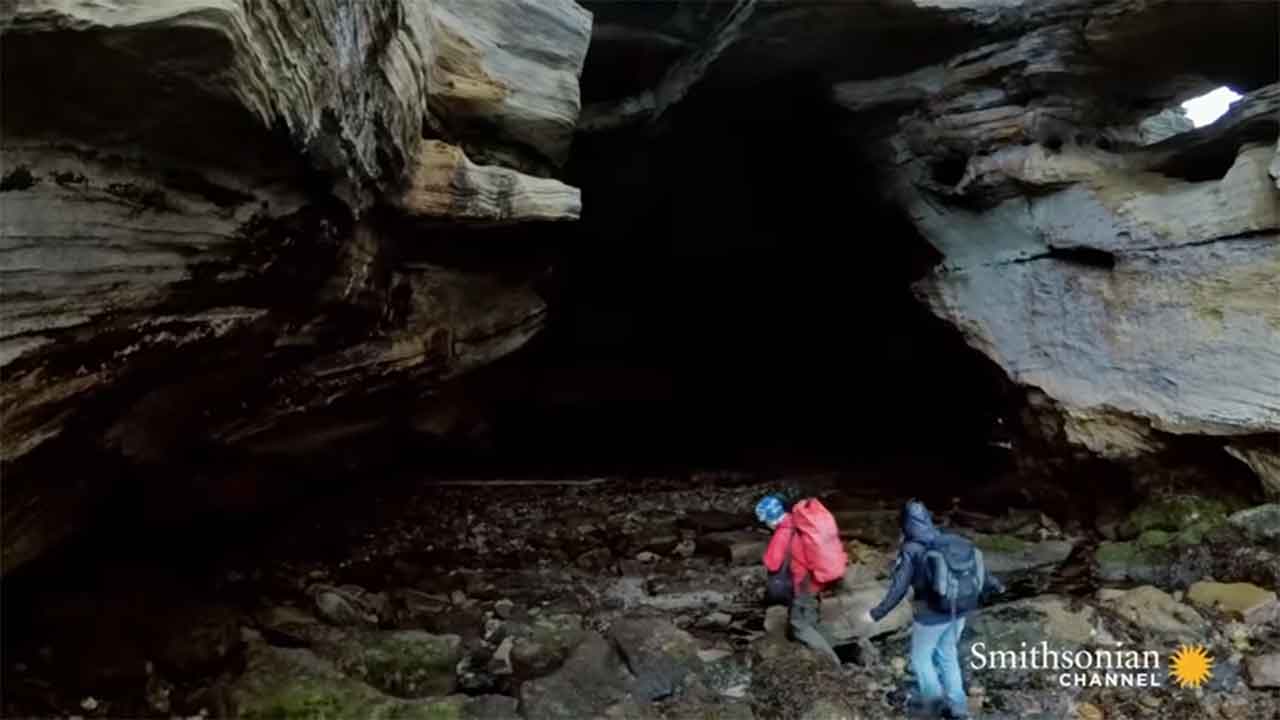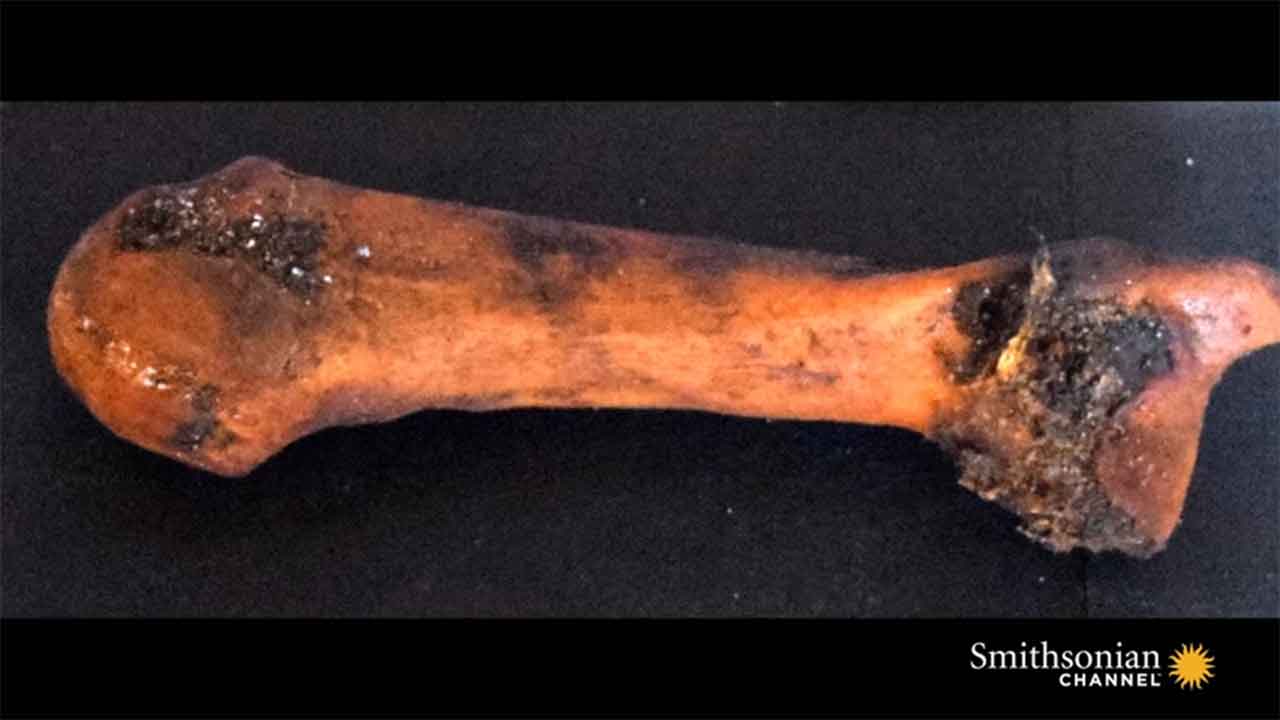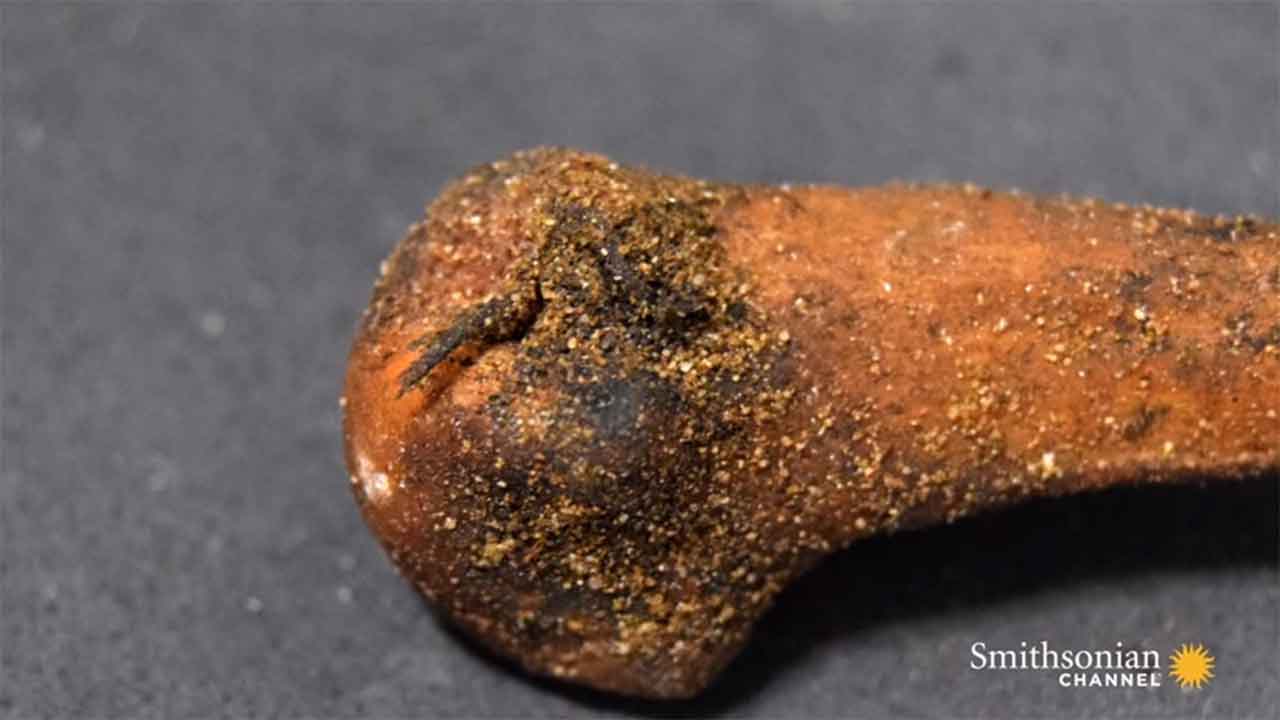Archaeologists baffled by ‘mystical’ find in Scottish cave

Though mummies are mostly associated with ancient Egypt, archeologists have found evidence suggesting mummification also took place on Scottish shores.
The team of researchers explored the Coversea Caves, just north of Inverness, with their exploits captured by the Smithsonian Channel’s documentary, Mystic Britain: Mummies.
The caves are among Scotland’s most impenetrable caverns, but evidence suggests that Bronze Age Britons made the “hazardous journey time and time again carrying the bodies of their dead”.
“For prehistoric people to make the effort and to make the journey would have been really arduous to do,” said Dr Lindsey Buster, a researcher at the University of Edinburgh.
“When archaeologists first started excavating here, the floor was strewn with human bones.”

Image: Smithsonian Channel / YouTube
Unlike bones previously found in Britain, these bones still had fragments of soft tissue on them.
“It’s not something we expect when we’re excavating a site that’s 3000 years old,” Dr Buster added.
“That’s a really significant find.”
It is possible that these bones once belonged to a fully-fleshed corpse that had been preserved in the unique conditions in the cave.

Traces of ligaments can still be seen on the remains. Image: Smithsonian Channel / YouTube.
The team also found evidence of fires being lit in the cave “at the same time presumably as bodies are being laid out”.
“The smoke could actually probably have helped to preserve bodies and body parts,” Dr Buster said.
Dr Buster suspects Bronze Age people came to the caves to purposefully mummify their friends and relatives.
“I think once bodies began to be brought into the cave and were behaving in ways that they didn’t normally do on above-ground sites, those characteristics were probably well-noted and became a factory of people coming back again and again over centuries to deposit their dead.”
Image: Smithsonian Channel / YouTube
